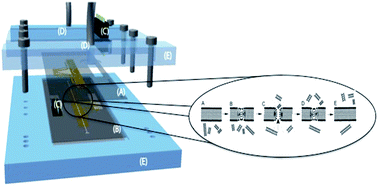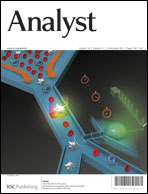Nucleic acid and protein extraction from electropermeabilized E. coli cells on a microfluidic chip
Abstract
Due to the extensive use of nucleic acid and protein analysis of bacterial samples, there is a need for simple and rapid extraction protocols for both plasmid DNA and RNA molecules as well as reporter proteins like the green fluorescent protein (GFP). In this report, an electropermeability technique has been developed which is based on exposing E. coli cells to low voltages to allow extraction of nucleic acids and proteins. The flow-through electropermeability chip used consists of a microfluidic channel with integrated gold electrodes that promote cell envelope channel formation at low applied voltages. This will allow small biomolecules with diameters less than 30 A to rapidly diffuse from the permeabilized cells to the surrounding solution. By controlling the applied voltage, partial and transient to complete cell opening can be obtained. By using DC voltages below 0.5 V, cell lysis can be avoided and the transiently formed pores can be closed again and the cells survive. This method has been used to extract RNA and GFP molecules under conditions of electropermeability. Plasmid DNA could be recovered when the applied voltage was increased to 2 V, thus causing complete cell lysis.


 Please wait while we load your content...
Please wait while we load your content...